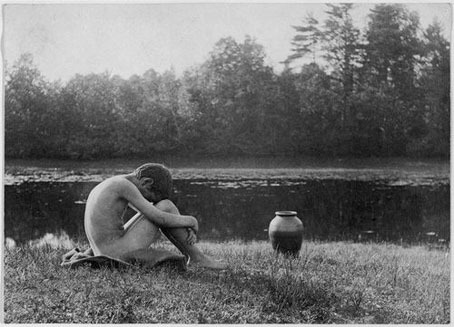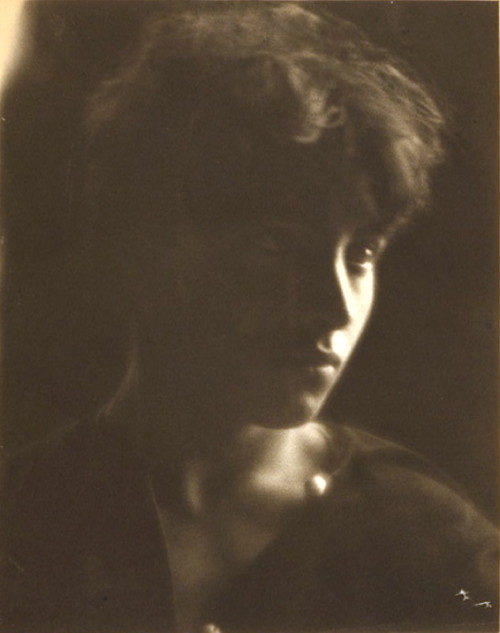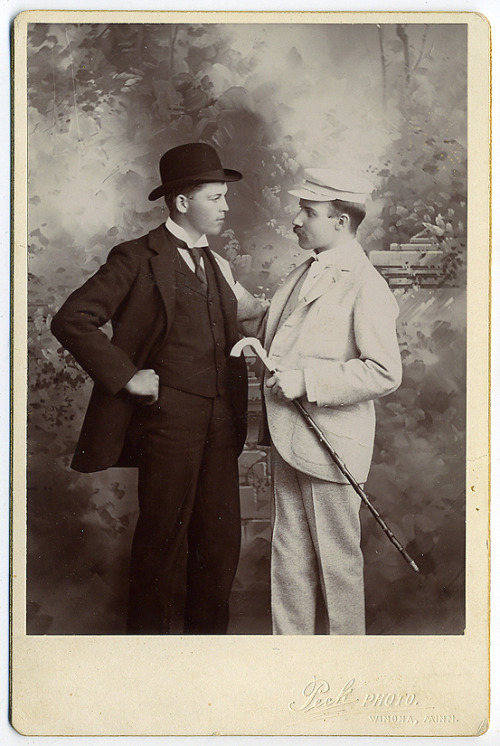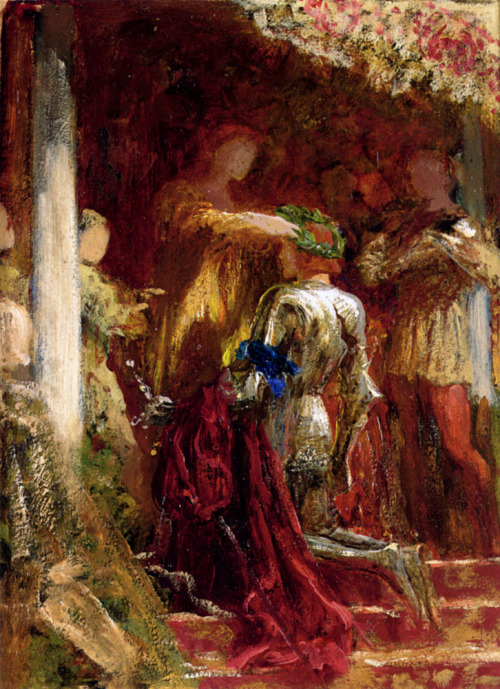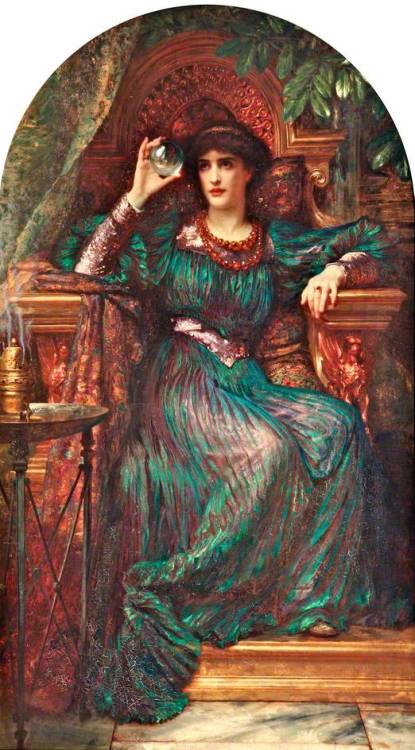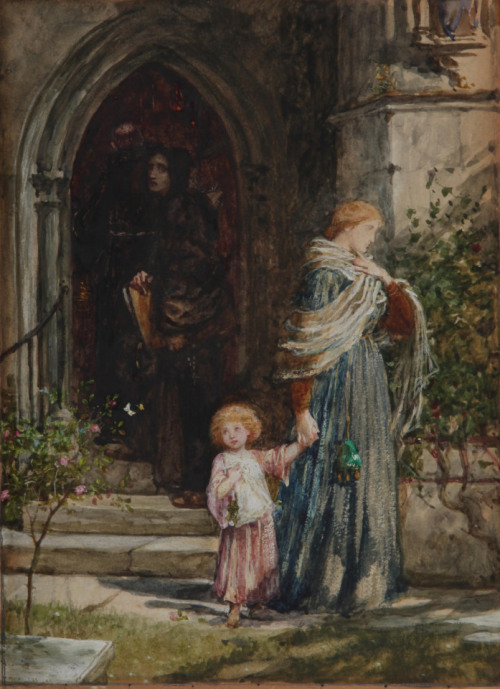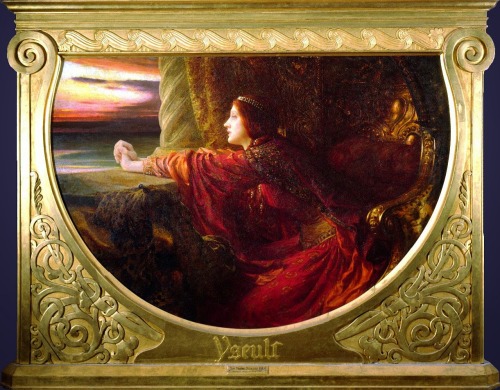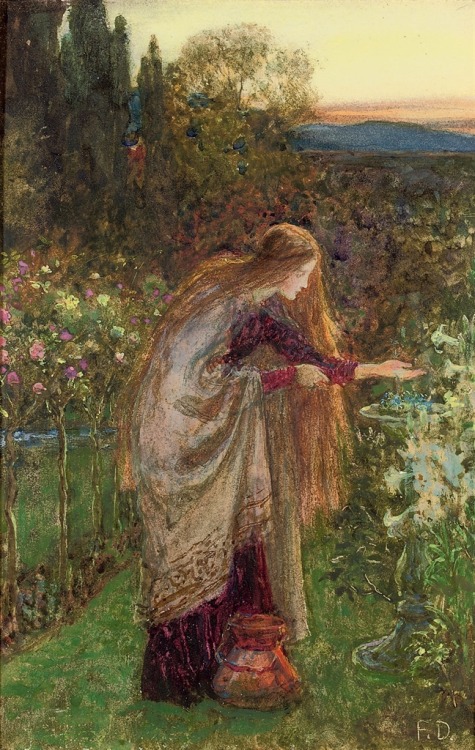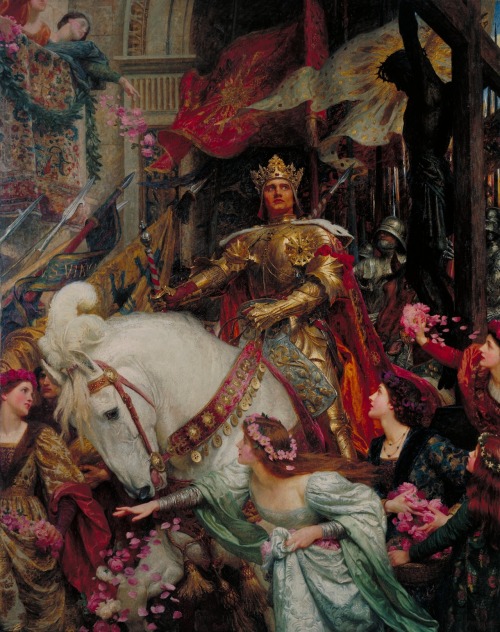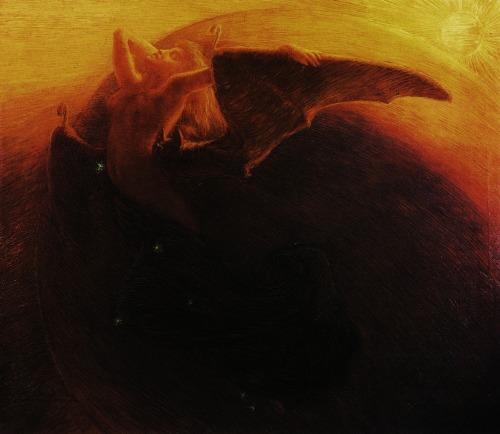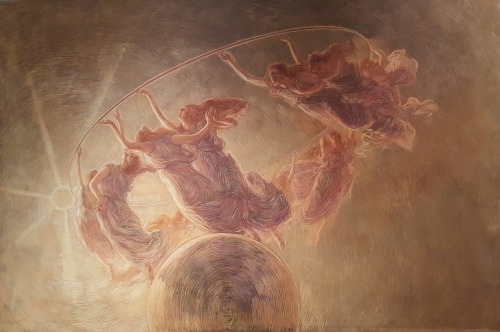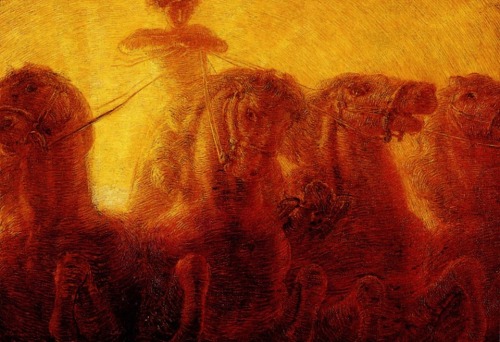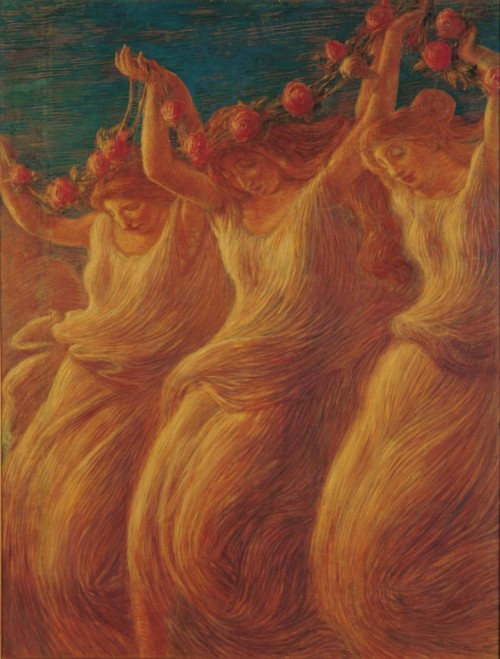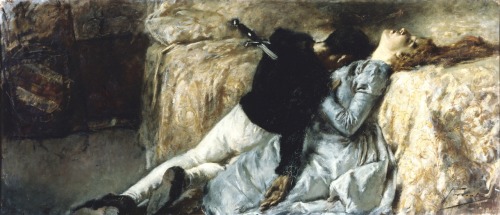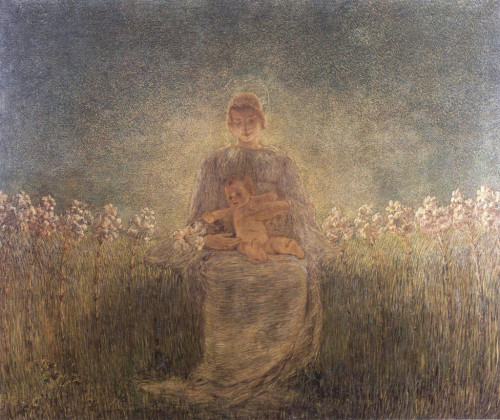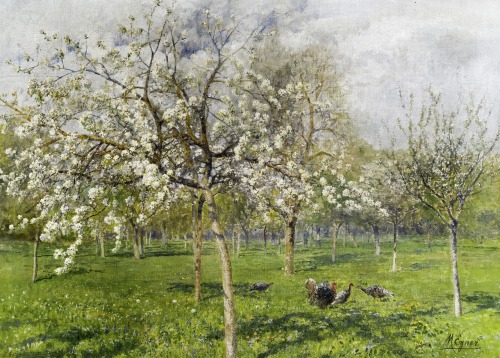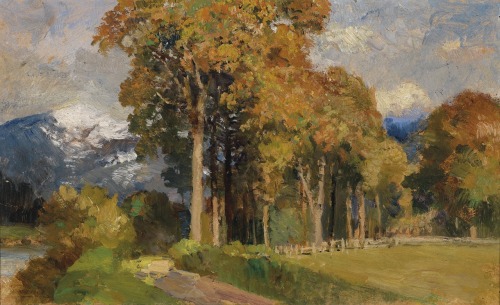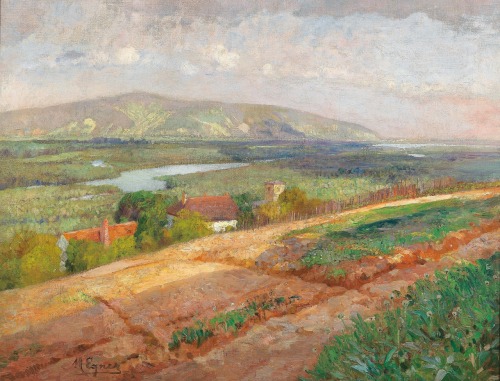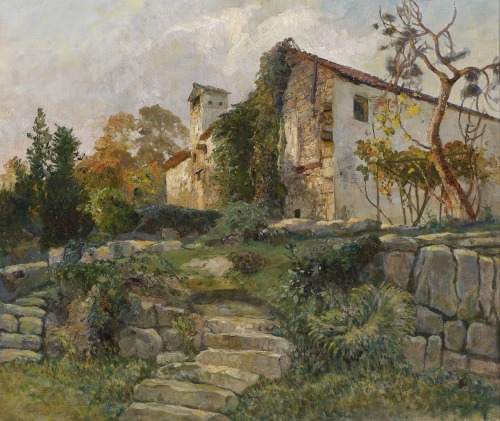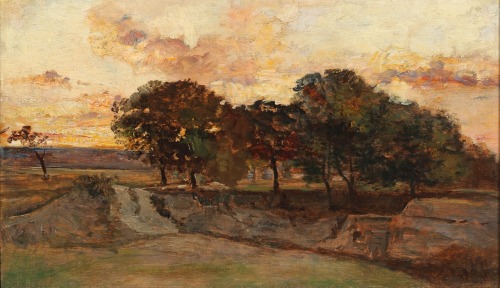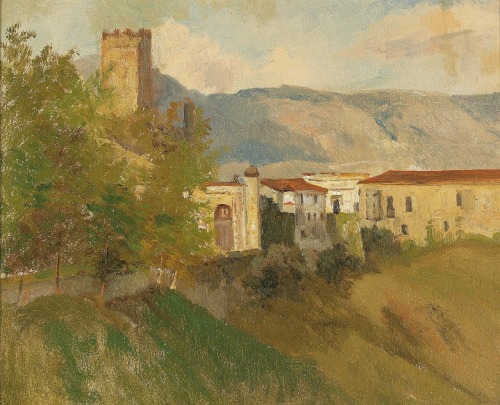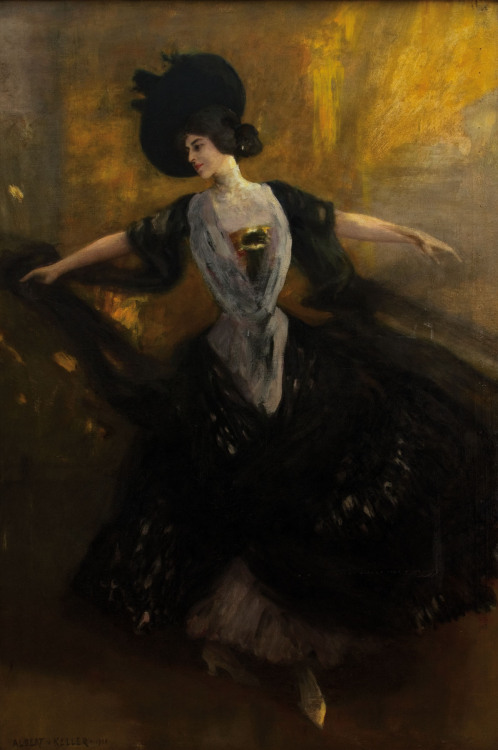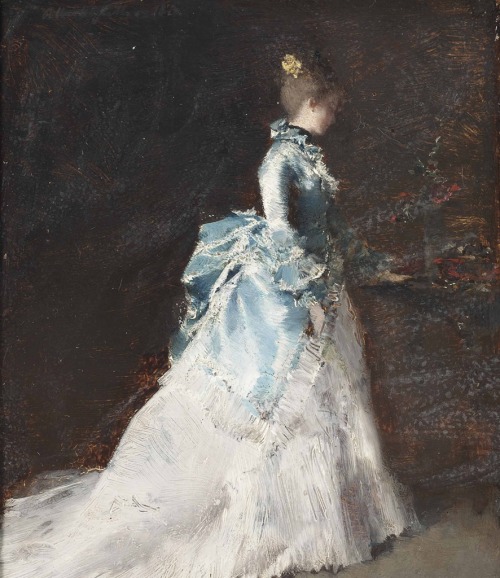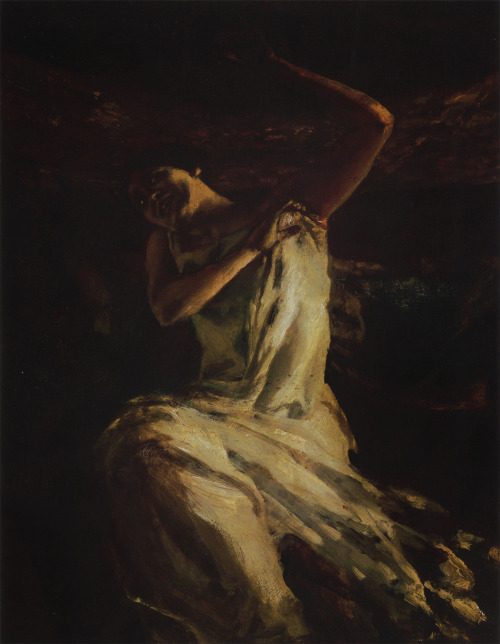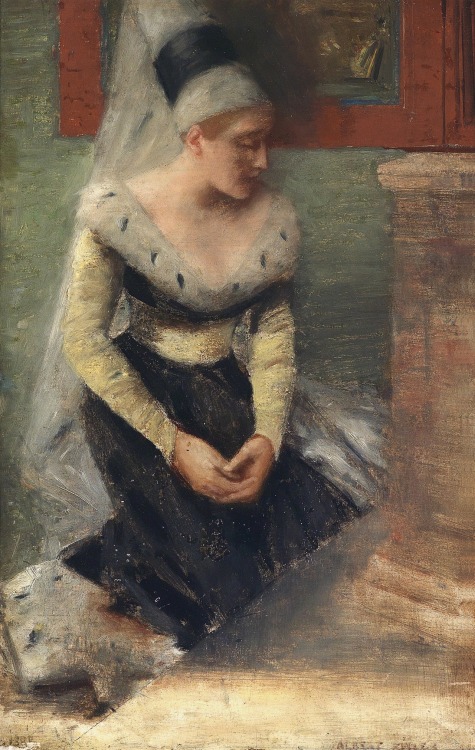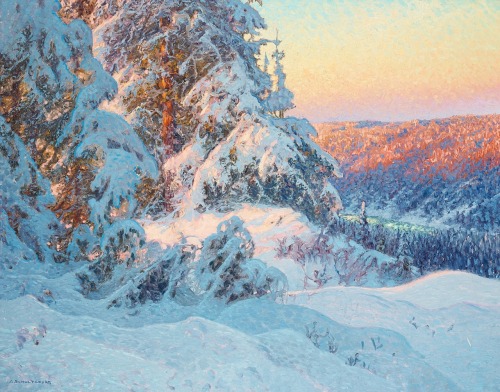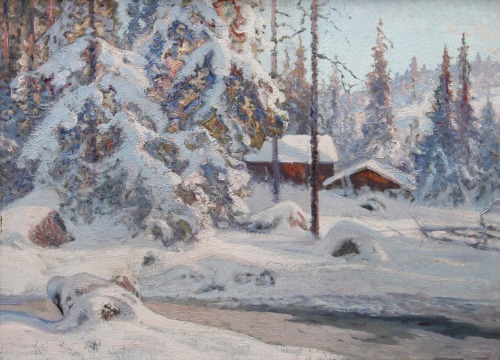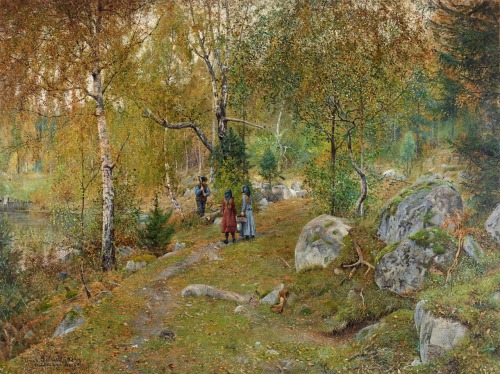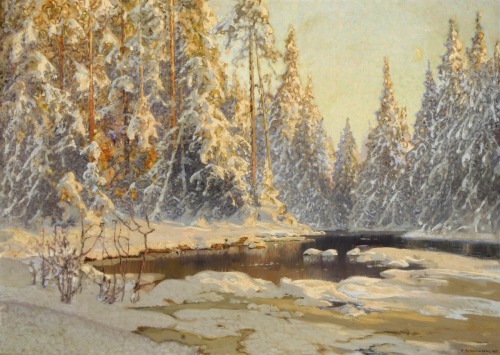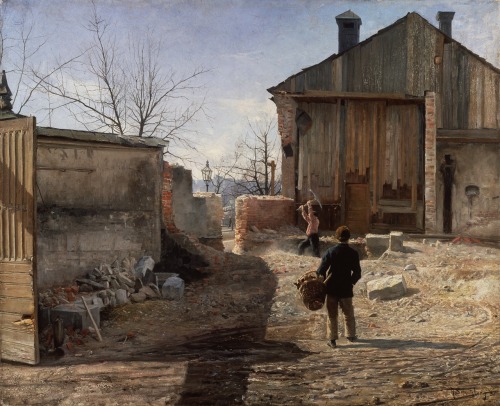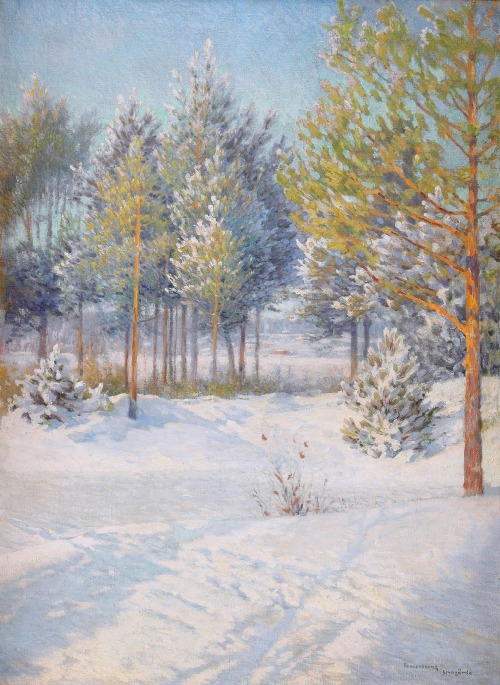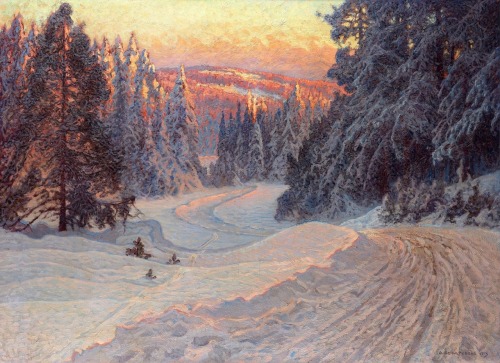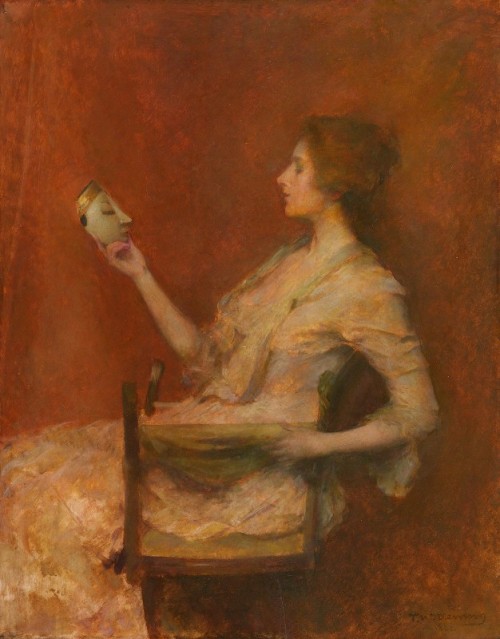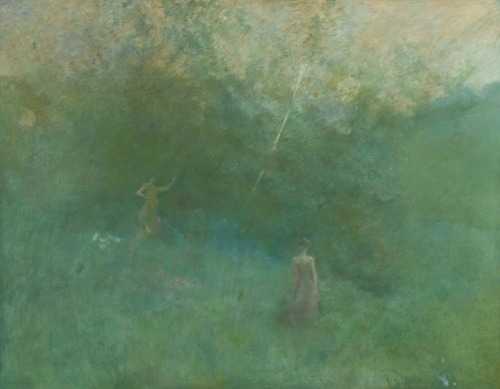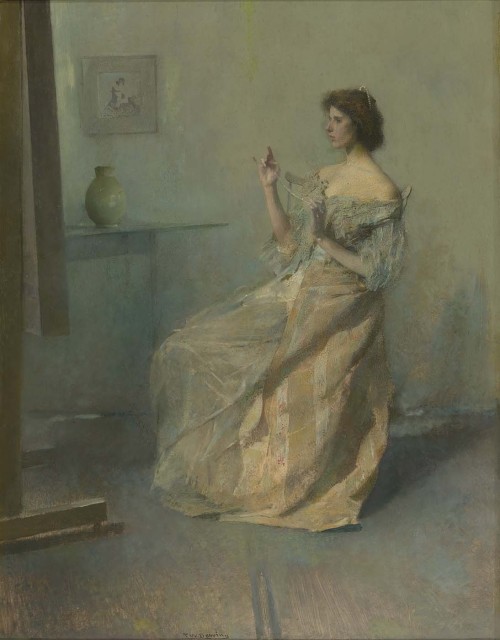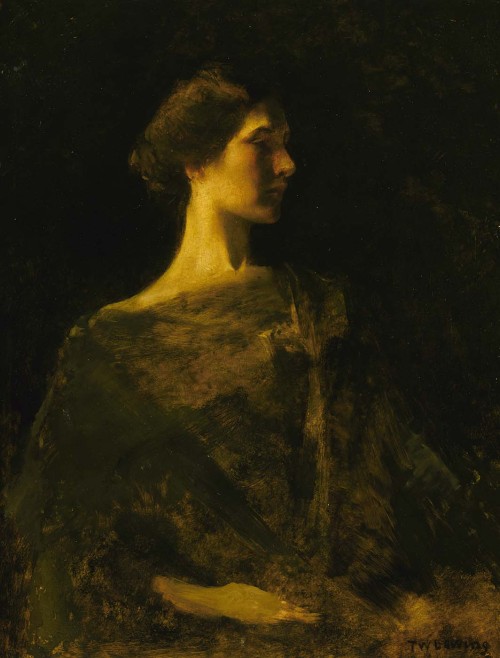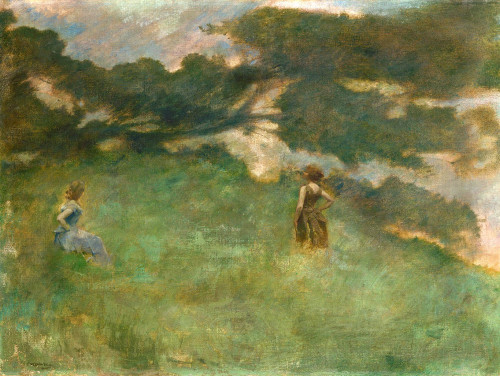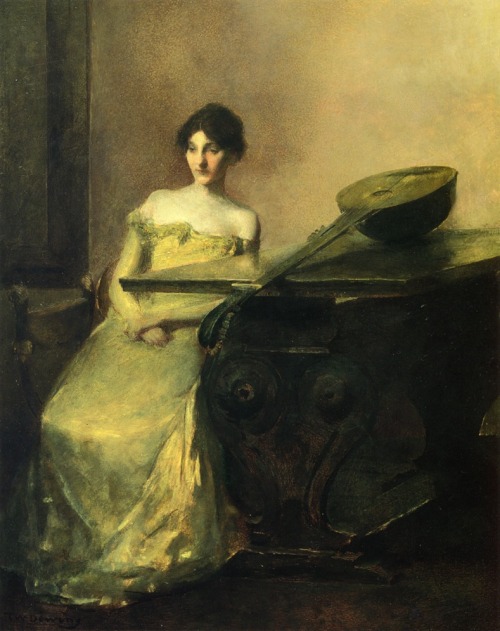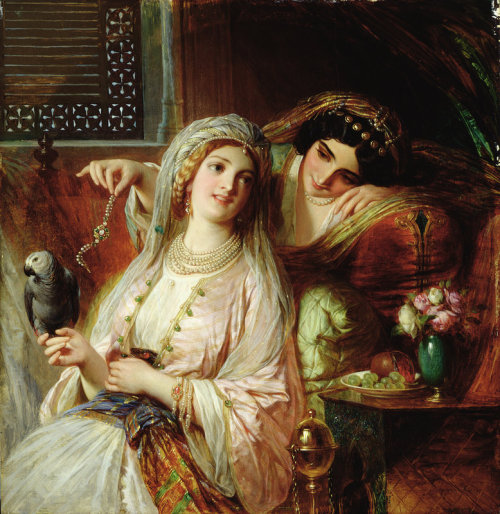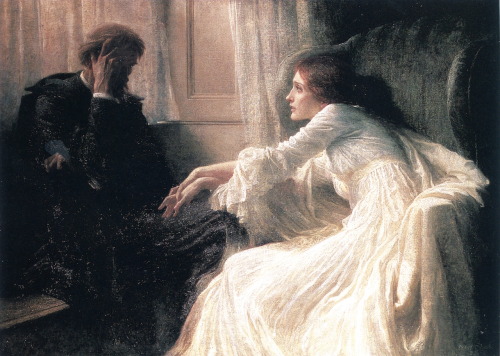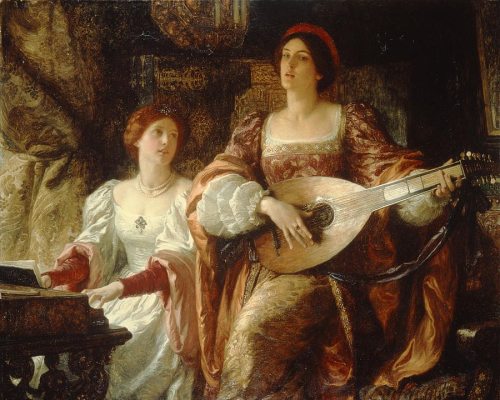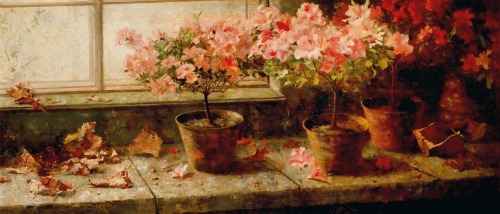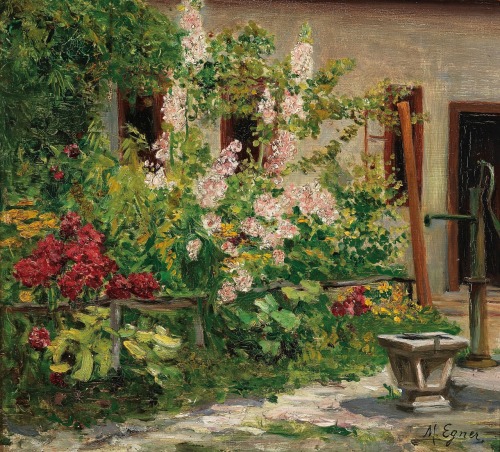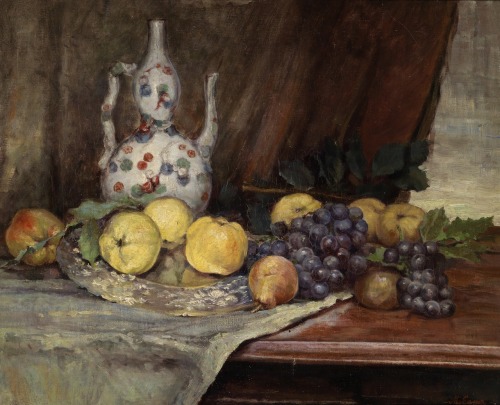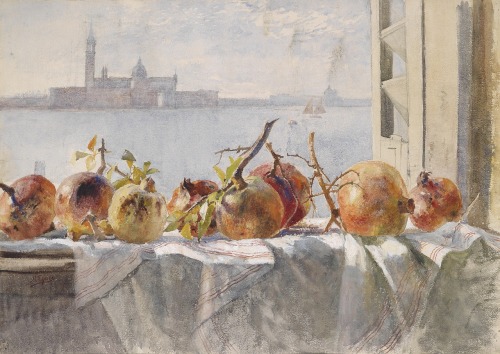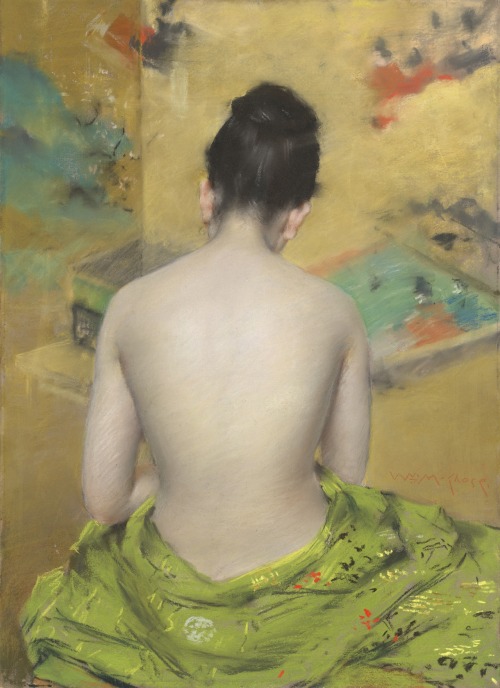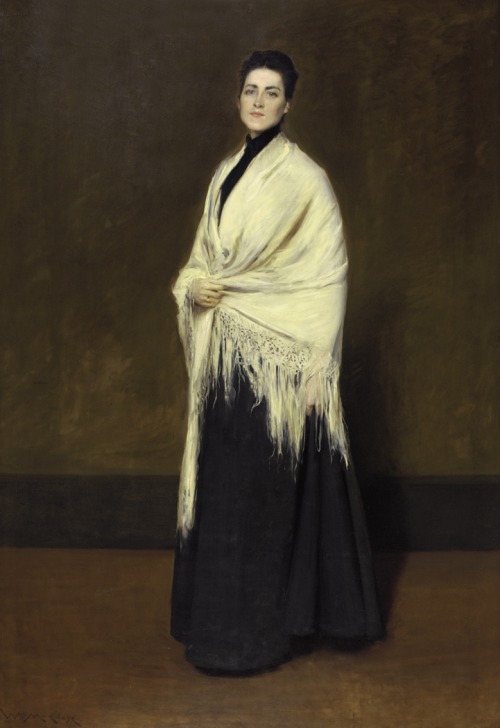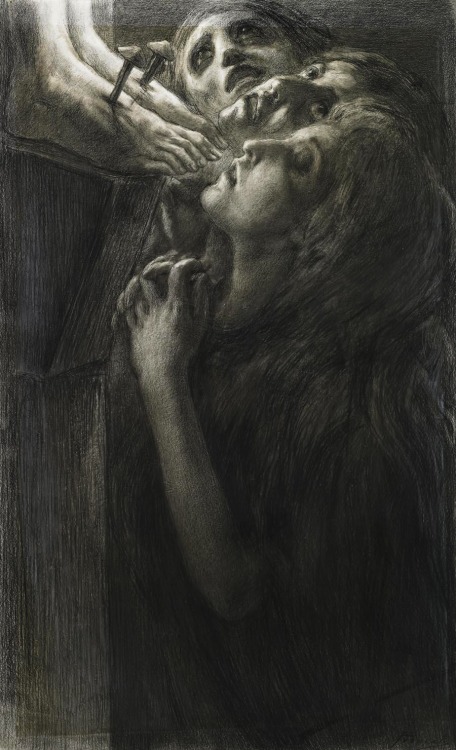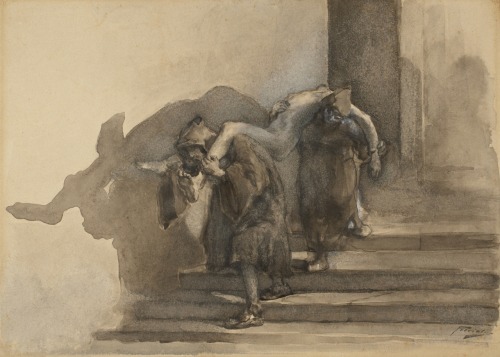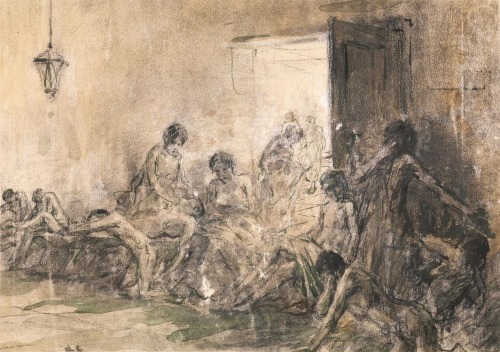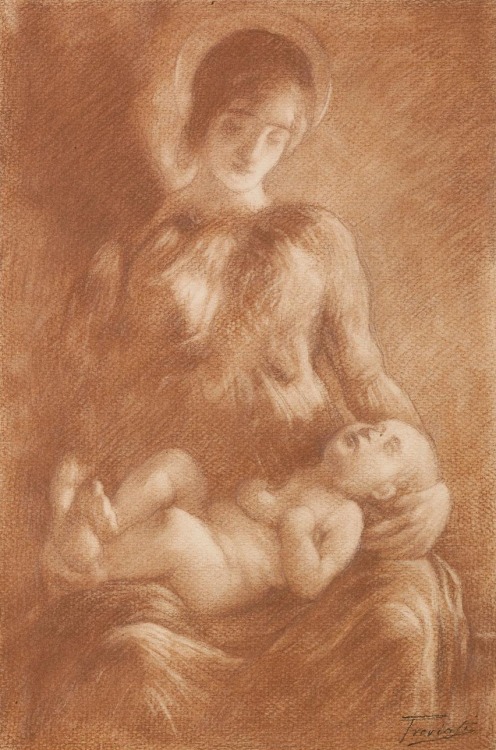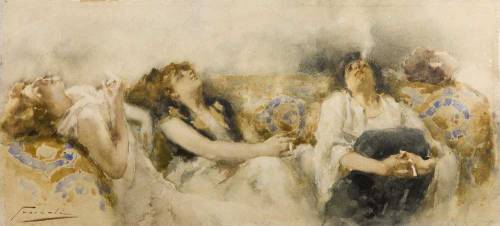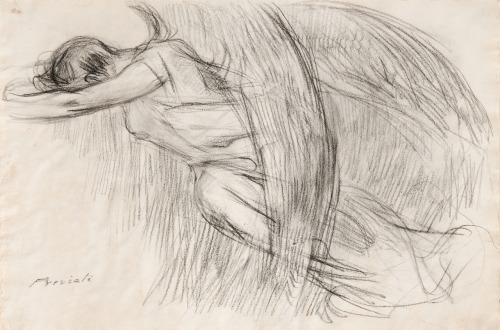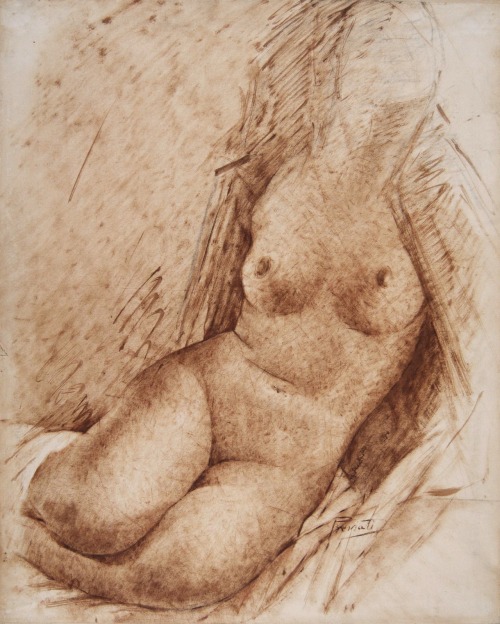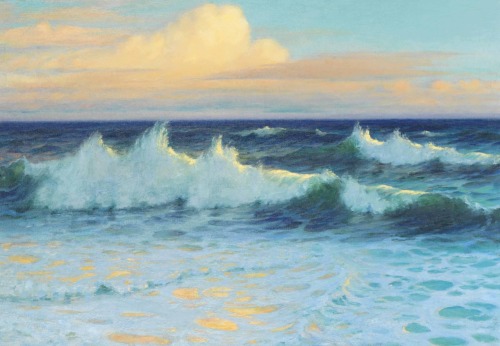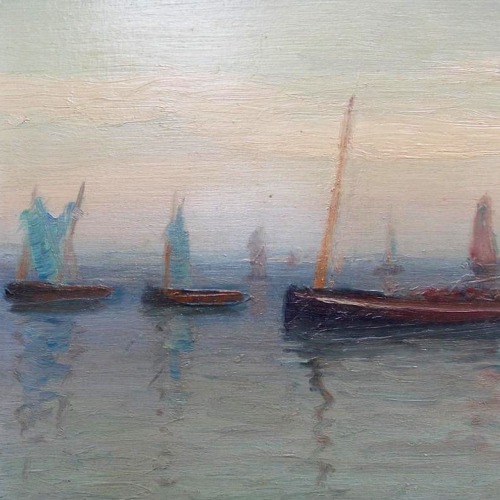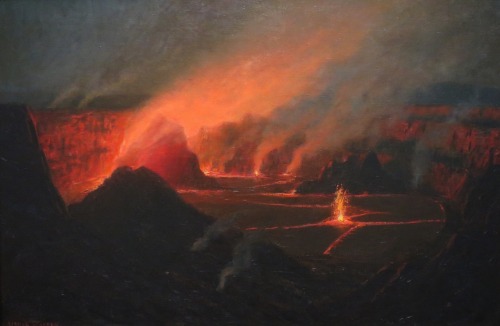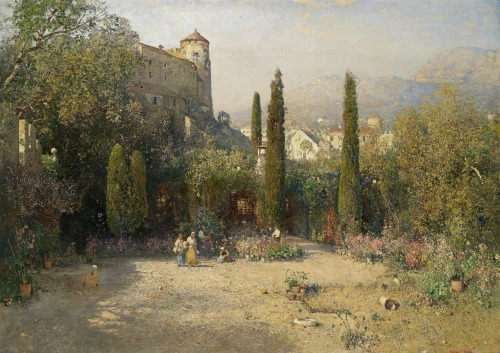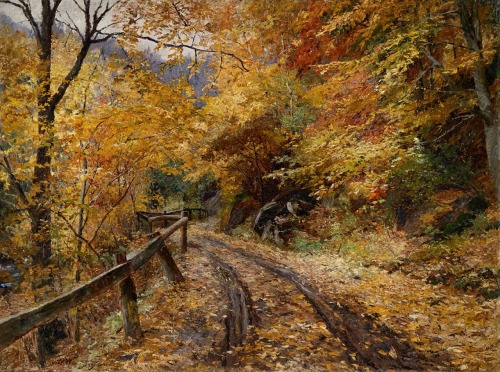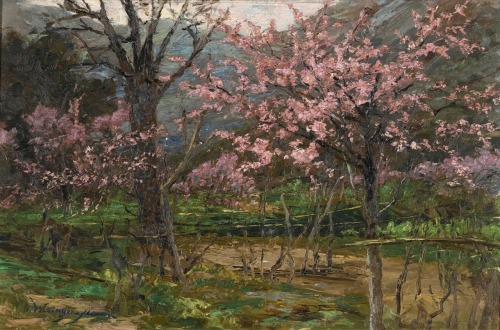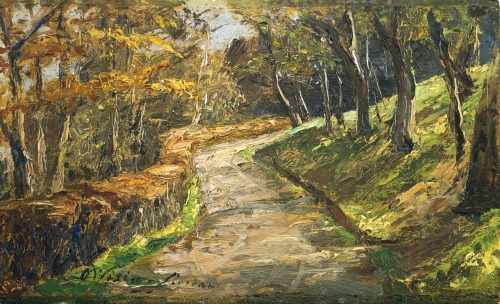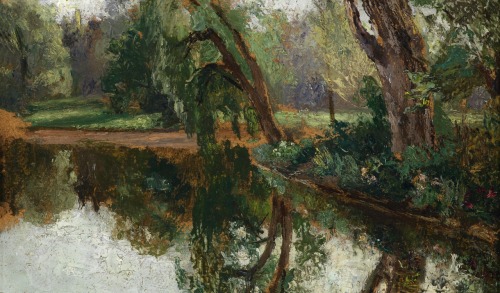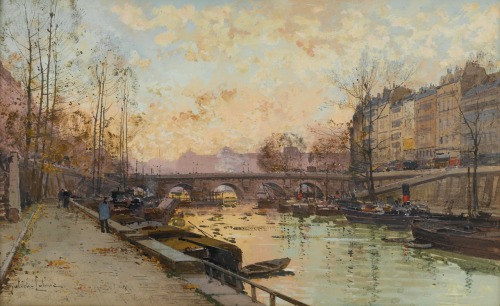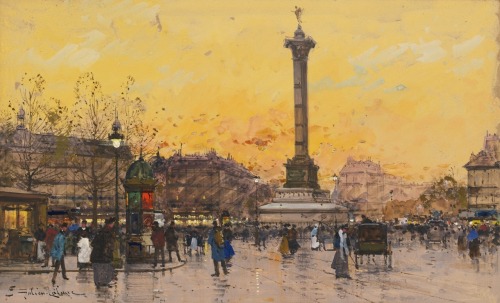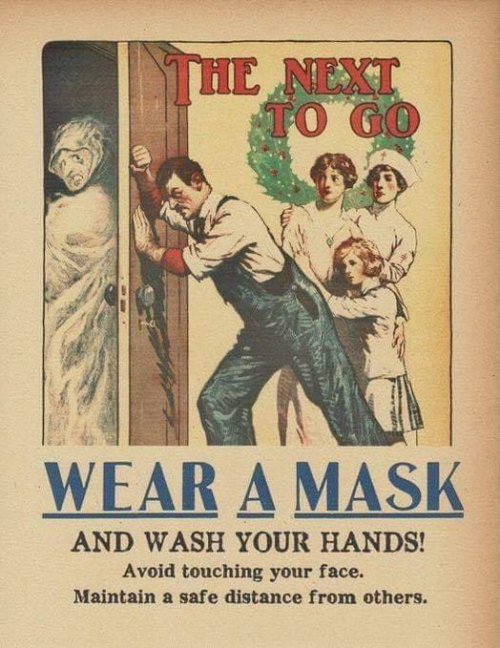#turn of the century
Evening, by F Holland Day, circa 1900. A marvellously evocative picture, you can almost feel the cool grass under his toes.
Post link
Fred Holland Day - Boy in unbuttoned shirt
We have enjoyed a selection of striking solo portraits by those working in Italy at the end of the 19th century and beginning of the 20th, the likes of von Gloeden, Plüschow and Galdi; now let us take a moment to look upon a wonderful portrait by an American turn-of-the-century photographer : F. Holland Day.
Like his unworldly scenes of melancholy beauty and solitary contemplation in the quiet wild places, this captivating closeup with simply breathtaking lighting has the same hazy soft focus - a deliberate artistic choice, not merely ‘cameras weren’t very good then’ as I’ve been told before when enthusing about this sublime style of photography!
Post link
Male Nude with Pan Pipes, c1900, by Plüschow - a simpler background than many, and all the more distinctive for that, as our attention is concentrated on the fantastically photogenic form of this beautiful broad-shouldered young man, with that charmingly eccentric mess of ruffled black hair over his forehead.
Post link
A pair of impeccably turned out gentlemen in their contrasting light and dark outfits make for a striking studio photograph, taken in Winona, Minnesota. Unusually, they do not look to the camera, but directly into one another’s eyes, giving us a powerful impression of the affection between them - and in addition, there’s a feeling that the photograph was not intended for anyone but themselves.
Post link
Frank Dicksee (Francis Bernard Dicksee) (1853–1928, Engand)
Medievalist paintings
Frank Dicksee was a prominent EnglishVictorian painterandillustrator. The son of Thomas Francis Dicksee, a noted painter of Shakespearean characters, he is best known for his pictures of dramatic literary, historical, and legendary scenes. He also was a noted painter of portraits of fashionable women, which helped to bring him success in his own time.
His style was not fully within other popular modes of the time, such as Pre-RaphaelismorNeoclassicism, and can be seen as a fusion of various methods and aesthetics of his time, including later in life utilising post-Romantic techniques such as lighter brushwork and softer shades.
Post link
Gaetano Previati (1852–1920, Italy)
Paintings
Gaetano Previati was an ItalianSymbolist painter whose work fell into the Divisionist style of Neo-Impressionism.
Post link
Marie Egner (1850-1940, Austria)
Landscapes
Marie Egner was an Austrian painteroflandscapesandstill lifes, working in a style influenced by impressionism.
Post link
Albert von Keller (1844–1920, Germany)
Figures and scenes
Keller was a Germanhistoricalandgenre painter, popular in his time as a societyportraitist. Over his fairly long life, unlike a lot of artists who found their style at odds with modernistic trends, he appears to have adapted quite easily to the altering artistic priorities at the end of the 19th Century. In some of his work can be found elements of symbolismandexpressionism.
Post link
Thomas Dewing (1851–1938, United States)
Thomas Dewing was an American painter working at the turn of the 20th century. His style was influenced by the Englishaesthetic movement, which prioritised beauty and sensual qualities opposed to traditional moral or narrative considerations. His art became known for an extreme refinement of style, as well as its characteristic dream-like haze and detachment.
Post link
Frank Dicksee (Francis Bernard Dicksee) (1853–1928, Engand)
Genre scenes
Frank Dicksee was a prominent EnglishVictorian painterandillustrator. The son of Thomas Francis Dicksee, a noted painter of Shakespearean characters, he is best known for his pictures of dramatic literary, historical, and legendary scenes. He also was a noted painter of portraits of fashionable women, which helped to bring him success in his own time.
His style was not fully within other popular modes of the time, such as Pre-RaphaelismorNeoclassicism, and can be seen as a fusion of various methods and aesthetics of his time, including later in life utilising post-Romantic techniques such as lighter brushwork and softer shades.
Post link
Marie Egner (1850-1940, Austria)
Still lifes
Marie Egner was an Austrian painteroflandscapesandstill lifes, working in a style influenced by impressionism.
Post link
William Merritt Chase (1849–1916, United States)
Figure paintings
William Merritt Chase was an American painter and exponent of Impressionism.
Post link
Gaetano Previati (1852–1920, Italy)
Drawings
Gaetano Previati was an ItalianSymbolist painter whose work fell into the Divisionist style of Neo-Impressionism.
Post link
Lionel Walden (1861-1933, United States)
Walden was an Americanlandscape painter active in Hawaii, Cornwall, Wales and France. Particularly known for his seascapes, and depictions of Hawaii, which constitute the first noteworthy attempts by a professional artist to portray the region in painting.
Post link
Olga Wisinger-Florian (1844–1926, Austria)
Landscapes
Olga Wisinger-Florian was an Austrian painter, mainly of landscapesandstill lifes. She was a representative of Stimmungsimpressionismus (Mood Impressionism), a loose Austrian school of Impressionism that was considered avant-garde in the 1870s and 1880s.
Post link
Eugène Galien-Laloue (1854–1941, France)
Galien-Laloue was a Frenchlandscape artist of the Belle Époque. He was a populariser of street scenes, usually painted in autumn or winter, and his work has left us some of the most vivid depictions of everyday Paris, populated by shoppers, horse-drawn carriages, trolley cars and omnibuses.
Post link
Public Safety Poster: Christmas 1918.
Source: Thanatos Archive
* * * *
Rebecca Solnit
A little over two years ago at the outset of the pandemic I wrote: If you’re pregnant or you’re healing from something or you’re a child or adolescent in a growth spurt, you are working all the time to produce what comes next. What looks like “doing nothing” is productive on all sorts of levels, most of them below the horizon of consciousness.
If you’re in the middle of a pandemic, just absorbing what it means in terms of your own transformed life and the fate of whatever nation you’re in and the world, of practical plans and metaphysical and political implications, is a huge task. I think most of us are absorbed in this task and it should be recognized as hard and necessary work, because that will help us forgive ourselves for not being so productive at our everyday work in the normal world we left behind this month. Because you probably are very productive now, but not in the way that was the norm a few weeks ago, and this is probably the most important work you can do. Still true of living through violent change and turmoil.
Post link

